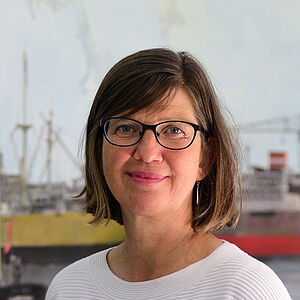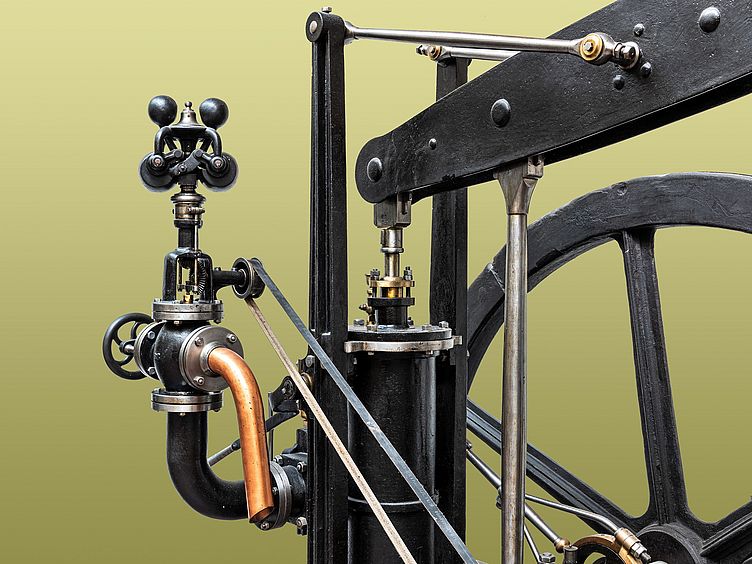
Photo: Deutsches Museum | Christian Illing
Traffic mobility transportation
Oceanography – Secrets of the Deep
More than two thirds of the Earth is covered by water, yet only a fraction of our oceans has been explored. The darkness, the cold and the immense pressure all pose major challenges.
What is Oceanography?
The seas are immensely important to humankind and the Earth: they influence the climate, provide valuable food and natural resources, and are a unique habitat for flora and fauna. Nevertheless, we know very little about the deep sea. Oceanographers are only gradually beginning to understand the ocean currents, the ecosystems of the deep sea and the geological structures of the ocean floor.
Using searchlights to look for deep-sea fish, observing an underwater robot, going on a diving expedition: the Oceanography exhibition presents the technology needed for conducting research under the extreme conditions that exist in the depths of the ocean.
11,034mis the depth of the deepest point on Earth. It can be found in the Mariana Trench in the western Pacific.
214mis the depth that extreme diver Herbert Nitsch dived in 2007 without any aids or air supply.
3,000mis the depth that sperm whales can dive to. That is the record for mammals.
Exhibition Themes
Diorama: the Challenger’s research laboratory. Its first oceanographic expedition took place from 1872 to 1876. Photo: Deutsches Museum | Christian Illing
The Origins of Oceanography
Until the mid-19th century, the deep sea was regarded as a dead, lifeless place. So the surprise was all the greater when traces of living organisms were found on the first telegraph cables that were laid under the water. This generated a great deal of interest in exploring the deep sea.
A detailed diorama of the first scientific expedition at the end of the 19th century shows how an interdisciplinary team of researchers worked on the research ship Challenger. At the beginning of the 20th century, the German Atlantic expedition of the research ship Meteor conducted the first systematic survey of the floor of the Atlantic Ocean. A model of the tall ship Gauss also takes you on a journey on the first German Antarctic expedition.
Photo: Deutsches Museum | Christian Illing
Modern Oceanography – Opening up the Oceans
Our planet’s largest ecosystem holds a wealth of hidden secrets. But particularly in light of climate change, it is becoming increasingly important to find out more about the oceans. Researchers use state-of-the-art equipment to explore the unknown depths in order to understand relationships and changes.
The exhibition presents technical tools that we use to go deep down into the ocean. Special submersibles take people to impossible depths. Numerous devices measure changes in currents, while underwater robots investigate plant and animal habitats and their substrate – in addition to taking samples or charting the ocean floor.
Photo: Deutsches Museum | Christian Illing
Into the Deep
People cannot survive under the immense pressure of the deep sea without special equipment and tools to help. A demonstration allows visitors to feel how sharply the pressure increases with the depth of the water.
In the 1920s, divers reached a depth of several hundred metres for the first time using special metal equipment. An original atmospheric diving suit from the pioneering period of deep-sea diving can be seen in the exhibition.
It is only possible to go deeper with special deep-sea submarines. In 1960, the Trieste dived to a record depth of 10,916m – and you can admire a replica of the bathysphere with original parts in the exhibition. If you feel anxious at the idea of gliding into the depths inside Piccard’s cramped bathysphere, you may prefer to go on a diving expedition with the German research robot MARUM-QUEST instead. With the help of its HD cameras, it allows people to marvel at the fascinating world of hot deep-sea springs.
“The sea covers seven tenths of the terrestrial globe. Its breath is pure and healthy. It is an immense desert, where man is never lonely, for he feels life stirring on all sides. The sea is only the embodiment of a supernatural and wonderful existence. It is nothing but love and emotion.”
Inside the oceanography exhibition
Supplementary material
Guided tour through the oceanography exhibition
Guided tour through the exhibition with curator Christian Sicka. This film is currently only available in German.
Virtual Tour
Discover the exhibition in 360°: click the mouse or touch the screen to look around in any direction. The virtual tour also includes text, films and audio information for many of the exhibits.
Virtual Tour through the Oceanography Exhibition
Facts
- approx. 400m² on the ground floor
- 80 exhibits
- 1 diorama
Any questions?
Do you have organizational questions?
Cornelia Schubert
Assistance to department heads, main department heads and curators
Susanne Schmölz
Assistance to department heads, main department heads and curators





